Text

A portrait of the comtesse de Provence by Charles Leclercq, circa 1780s. The portrait is held in the collection of the Château de Sassenage.
100 notes
·
View notes
Note
What do you think about the Petit Trianon not being fully restored to Marie Antoinette’s time? I personally dislike the times of du Barry, Marie-Louise, etc. being respected.
If we're talking about how the Queen's House at the hameau de la reine was done--with various 19th century interiors put in with the 18th century--then I hate it and NGL, I sometimes think the Chateau de Versailles team regrets it.
They were initially going to restore one of the other Hameau interior building interiors to Empire era because that's all they had concretely for the interior, and then they scrapped it, and just did a general 18th century interior in line with the Queen's House interiors. That's what I think they should have done for the other rooms at the Hameau, personally.
9 notes
·
View notes
Photo

The story of the giant ship that sank on its maiden voyage is so rife with symbolism that if it hadn’t actually happened, we might have had to invent it.
Yet it did happen, on that cold, clear April night in 1912. And it happened to real people—stokers, millionaires, society ladies, parsons, parlormaids—people who displayed a full range of all-too-human reactions as the events of the night unfolded. The recollections of those who survived, conflicting and embroidered though they often are, allow us to place ourselves on that sloping deck and ask: “What would we do?”
The unsinkable story sails on.
–Hugh Brewster, Gilded Lives, Fatal Voyage
567 notes
·
View notes
Text
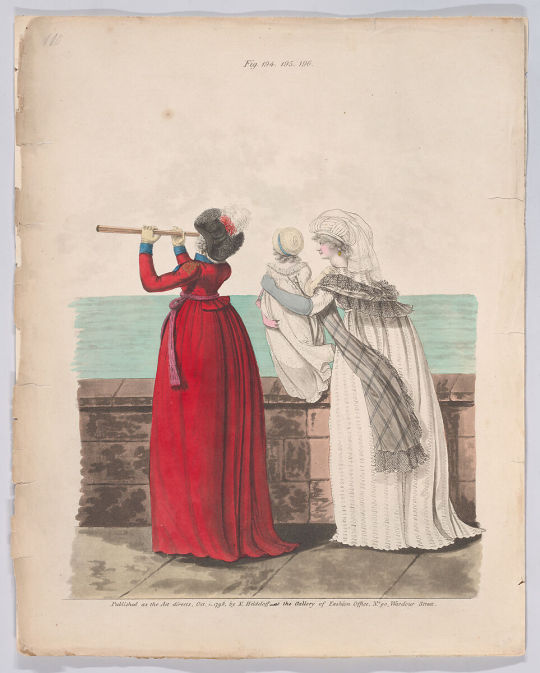
Gallery of Fashion, vol. V: April 1, 1798 - March 1 1799
From the Met Museum
51 notes
·
View notes
Text

A portrait of a woman in a chemise gown by Louis-Ami Arlaud-Jurine, circa 1785.
47 notes
·
View notes
Text

Gallery of Fashion, vol. V: April 1, 1798 - March 1 1799
From the Met Museum
47 notes
·
View notes
Photo



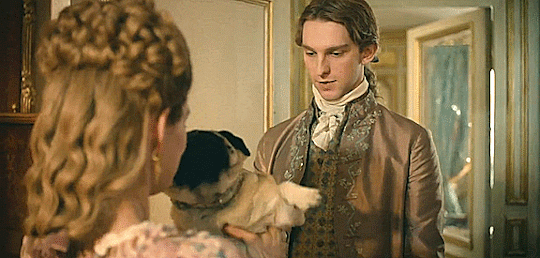


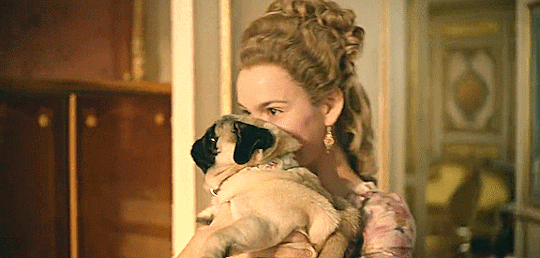
My husband delivered him to me
#y'all know how I feel about this show#but this scene was cute#(even though Mops wasn't real or at least there was not a specific dog with this backstory.)
331 notes
·
View notes
Text


I really don't think it's a coincidence that these match so well, down to the hat in the boy's arm with a visible white feather. I would assume the woman here is then meant to be Marie Antoinette, and perhaps Louis (seen in the full miniature, where the girl is pointing) is joining them for a walk, as he often did.
66 notes
·
View notes
Text

A miniature possibly depicting the royal family and entourage in the gardens of Versailles. The miniature is being sold by Pichon & Noudel-Deniau.
Although the listing suggests that this depicts Madame de Tourzel holding the hands of Marie-Therese and Louis Charles, I think that the children here are almost certainly Marie-Therese and Louis Joseph. The posing of the trio on the right is strikingly similar to Wertmuller's portrait of Marie Antoinette, Marie-Therese and Louis Joseph:
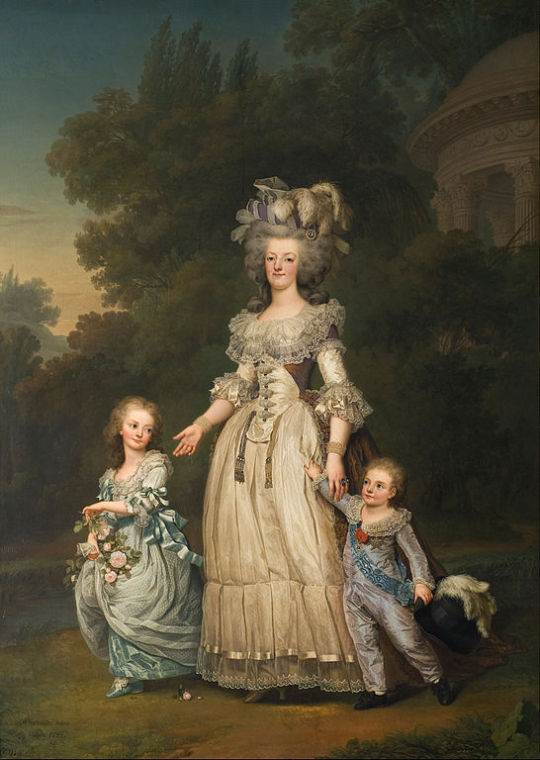
So if the woman on the right is a governess, she would not be Madame de Tourzel. Although personally, I think it's plausible that the woman could just as easily be Marie Antoinette herself.
94 notes
·
View notes
Note
this is a bit of a random question and i apologise if it’s insensitive, you don’t have to answer this!!!
but recently i’ve seen a lot of people call Marie Antoinette racist? at first i thought it was someone just hating her and or, making stuff up but the more i look a lot of people are saying it but i can’t really seem to find anything where it says she IS racist.
so i guess my question is, has she really said anything like that? or is it just rumours about her? am i missing something?
again sorry if this is a bit stupid. you don’t have to answer this if you don’t want to but i thought itd be good to ask as i’ve learned a majority of history from your blog. thanks :)
My main guess would be people who watched the "Chevalier" film and thought it was historically accurate. I've seen a few people on various social media implying she was a "fake ally" to Bologne and citing the film's events as facts.
What little we do know about Marie Antoinette in relation to racism is that she:
supported Joseph Bologne; played privately with him and supported him publicly in a massive way in the 1780s, despite the Opera scandal which involved women of the opera using racism to ensure he didn't get the position
did not at least personally choose the normal aristocratic route of putting a trafficked child "gifted" to her into slavery (in all but name) by dressing him up exotically and making him a servant. Instead, the child Amilcar was baptised, she had servants in her household be his godparents, she sent him to school, etc. The revolutionaries, when considering a petition for Amilcar's care after Marie Antoinette's death, even noted that she committed an "unusual act of humanity" that was contrary to what aristocrats usually did.
There were at least some of these enslaved "Exoticized" servants at Versailles, as we see them in 2 portraits of her at the hunt, but it's unclear how many there were, and what Marie Antoinette's involvement with them was. It is possible they were part of the king's household retinue for hunting, or that they were represented in the hunting portraits as a means of "prestige."
We have nothing directly written by Marie Antoinette that suggests she was any more racist than the typical person in her time. We do have some evidence that suggests she was more tolerant than others, in her support of Joseph Bologne and treatment of Amilcar which was considered by revolutionaries to be an unusual act of humanity.
Race in 18th century France is a complicated situation, though. For instance, at the same time that Marie Antoinette is supporting Joseph Bologne, laws are passing under Louis XVI that require black people to register to the government, laws that limit the amount of black people in mainland France, etc. We have no evidence to show either way how Marie Antoinette felt about any of that.
All we have is knowing that she extended her personal kindness and sympathy towards two individuals who were not always treated well, although I say her treatment of Amilcar is more notable given how popular Bologne was among the aristocracy anyway.
43 notes
·
View notes
Note
What is your opinion on Marie-Antoinette by Fuyumi Soryo? The art is beautiful!
I haven't read it! I've been meaning to add it to my collection. I do think the art, or what I've seen f it, is quite lovely!
18 notes
·
View notes
Text

An engraving of the princesse de Lamballe. Source: Rijksmuseum.
38 notes
·
View notes
Text
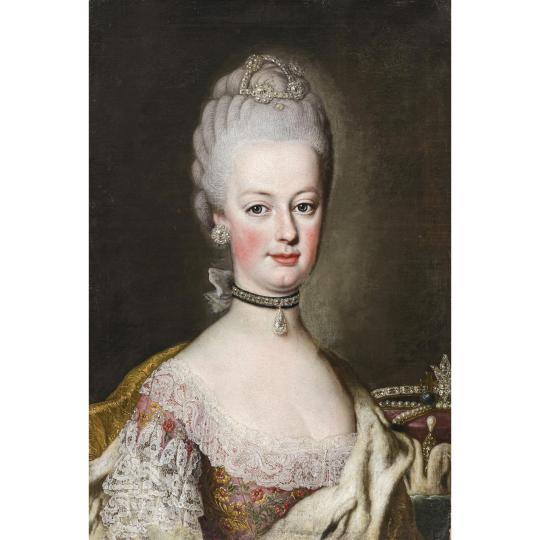
A portrait of Marie Antoinette by Johann Michael Millitz, 1770. Set to be auctioned by Neumeister.
102 notes
·
View notes
Text
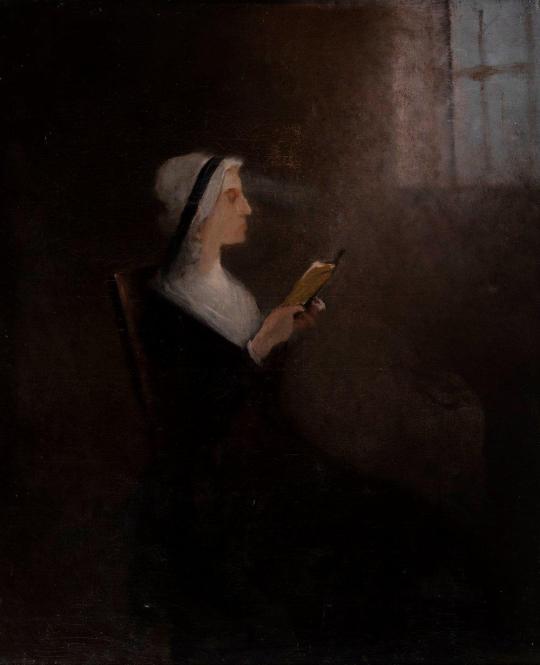
A painting depicting Marie Antoinette at the Conciergerie by an unidentified artist, late 18th or 19th century. Via Setdart Auction House.
76 notes
·
View notes
Text
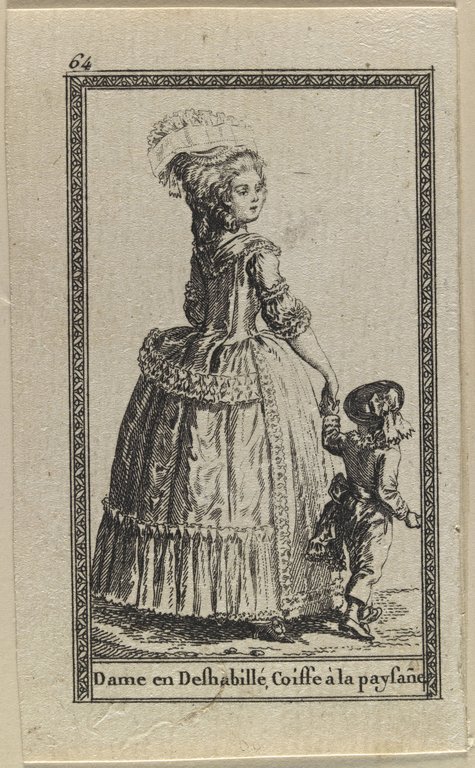
A fashion illustration depicting a woman wearing a deshabille gown with a hairstyle "a la paysane." From "Almanach galant des français," circa 1780s.
80 notes
·
View notes
Text


A miniature portrait of Marie Antoinette by Jean-Laurent Mosnier, 1776. The back of the portrait includes a lock of hair, presumably from Marie Antoinette. Being sold via Coutau-Bégarie & Associés.
93 notes
·
View notes
Note
What do you think was the “come to Jesus” moment Joseph had with Louis and Antoinette? Do you think he actually gave them sexual advice or encouraged them to change their perspective on it? Perhaps to view it as an act of love and not just duty and obligation. Maybe he gave them some pseudo-psychological help.
Honestly, I think it's hard to say if there was a specific "come to Jesus" moment since there appear to be a lot of factors involved.
Personally I do not take Joseph II's letter, which is usually used to claim that Louis XVI didn't "know" he had to ejaculate inside in order to get a woman pregnant and which has been used to imply that the solution was Joseph II telling Louis XVI to keep at it until he finished, at face value.
I think you're more or less spot on, really, that his advice was more psychological.
Because the state of things up until Joseph arrived...
Louis XV described Marie Antoinette as being physically "like a child" when she first arrived, and Maria Theresa was (initially) not concerned about the lack of consummation due to their age.
We know that they started attempting consummation by 1773.
Their first attempts at consummation were met with physical pain that both of them experienced
Ambassador Mercy wondered if it was a situation similar to that of Louis XVI's father and one of his wives, who had a 'narrowness of passage' that caused pain, and it took some time to work through
Marie Antoinette told her mother that she considered her marriage "fully consummated" in 1773, but she knew she wasn't pregnant at this point
Louis XVI was examined by physicians numerous times, Louis XV had a physician explain sex to him fully, and almost every physician (except at least one, whose advice on a surgery was never followed through, as Louis XVI's other physicians said wasn't necessary) said there was nothing physically wrong with him to prevent healthy sex. One of the top physicians in France concluded it was a combination of awkwardness, physical discomfort, social shyness, and lack of experience that was causing the issue.
From 1774-1777, consummation attempts slowly become more and more sporadic, there are periods where Marie Antoinette is sick, where Louis was quarantined after being inoculated, etc.
It is during the later part of this time period that MA also begins to start her "party" phase. She starts to say up very late--which means there aren't attempts at consummation, as she would come back to her bedroom only after Louis went to bed. She is spending more time with young people around her, gambling, going to Paris, partying, etc, and less time with Louis.
This is kind of where they were at when Joseph arrived. Consummation attempts were not as frequent, Marie Antoinette seemed to be avoiding them at times.
At one point during Joseph's visit, he quite literally grabbed Marie Antoinette and pulled her out of the rooms of the duchesse de Polignac and told her to spend more time with her husband.
In the letter he left behind, he tells her that she is not behaving like a wife who would entice a husband to sleep with her, that she needed to be more companionable, sweeter, etc to improve their relationship. She was, at this point in time, gambling, staying out late in Paris, and effectively not contributing to an atmosphere in which there were going to be successful.
On Louis XVI's end, if we believe Joseph's letter in which he says Louis entered MA but stayed still and then pulled out, it may have been a combination of many things. The situation was not pleasant for either of them, there had been pain early on and perhaps still was pain, he was afraid of hurting her or perhaps she showed the discomfort on her face, etc.
Personally, I do not believe that Louis would have been examined by so many physicians and specifically instructed by one under Louis XV's orders to explain sex fully, but somehow just "didn't know" he was supposed to finish inside.
So i don't know if it was "one thing" which Joseph's visit solved, but more than Joseph's visit gave them a chance to "refresh" things while considering his analysis of the situation--Marie Antoinette, paying more attention to him, being less cold in terms of consummation; Louis XVI, not stopping the consummation at entering--who knows, perhaps Joseph II talked to him about how it may be uncomfortable at first but gets more comfortable for the other person and thus himself if you keep going.
It wasn't an instant fix, necessarily, but one which at least put them on the path of being more capable of successful consummation.
35 notes
·
View notes